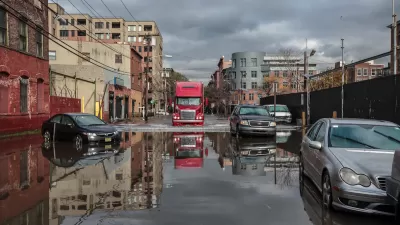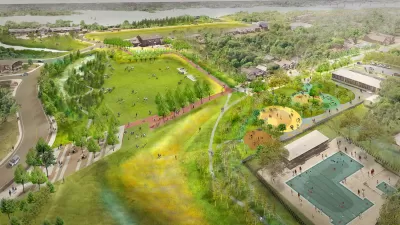Colorado Department of Local Affairs releases "Planning for Hazards: Land Use Solutions for Colorado," a guide and website to help Colorado agencies prepare for natural disasters and reduce risks through resilience and hazard mitigation.
The Colorado Department of Local Affairs (DOLA) Division of Local Government released a new Planning for Hazards: Land Use Solutions for Colorado guide and website designed to help Colorado counties and municipalities prepare for natural disasters and reduce risks through the integration of resilience and hazard mitigation.
The guide and website provide a unique compilation of comprehensive materials, disaster recovery strategies, and lessons learned assembled over the years since the state’s devastating fires and floods in 2012/13. The guide includes information about creating a planning framework, hazard identification, and risk assessments to help communities implement resiliency strategies. The website provides users a variety of options to obtain specific information on targeted topics that will be supplemented over time with additional videos and links to new resources. The University of Colorado Denver, who participated in development, will manage and maintain the website.
In support of the state’s disaster recovery efforts, DOLA provided funding for the guide and website, and collaborated with an advisory committee comprised of state and federal agencies, local governments, and subject-matter experts in hazard mitigation and land use planning to create the final products.
FULL STORY: Colorado Department of Local Affairs Press Release

Study: Maui’s Plan to Convert Vacation Rentals to Long-Term Housing Could Cause Nearly $1 Billion Economic Loss
The plan would reduce visitor accommodation by 25,% resulting in 1,900 jobs lost.

North Texas Transit Leaders Tout Benefits of TOD for Growing Region
At a summit focused on transit-oriented development, policymakers discussed how North Texas’ expanded light rail system can serve as a tool for economic growth.

Why Should We Subsidize Public Transportation?
Many public transit agencies face financial stress due to rising costs, declining fare revenue, and declining subsidies. Transit advocates must provide a strong business case for increasing public transit funding.

How Community Science Connects People, Parks, and Biodiversity
Community science engages people of all backgrounds in documenting local biodiversity, strengthening connections to nature, and contributing to global efforts like the City Nature Challenge to build a more inclusive and resilient future.

Alabama: Trump Terminates Settlements for Black Communities Harmed By Raw Sewage
Trump deemed the landmark civil rights agreement “illegal DEI and environmental justice policy.”

Dear Tesla Driver: “It’s not You, It’s Him.”
Amidst a booming bumper sticker industry, one writer offers solace to those asking, “Does this car make me look fascist?”
Urban Design for Planners 1: Software Tools
This six-course series explores essential urban design concepts using open source software and equips planners with the tools they need to participate fully in the urban design process.
Planning for Universal Design
Learn the tools for implementing Universal Design in planning regulations.
City of Santa Clarita
Ascent Environmental
Institute for Housing and Urban Development Studies (IHS)
City of Grandview
Harvard GSD Executive Education
Toledo-Lucas County Plan Commissions
Salt Lake City
NYU Wagner Graduate School of Public Service




























